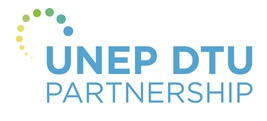A draft discussion paper released by the German Agency for International Cooperation (GIZ) and UN Environment Programme (UNEP) DTU Partnership examines how countries' efforts to simultaneously develop and implement Nationally Appropriate Mitigation Actions (NAMAs), Intended Nationally Determined Contributions (INDCs) and Low Emission Development Strategies (LEDS) can be effectively linked and mutually-reinforcing.
 November 2014: A draft discussion paper released by the German Agency for International Cooperation (GIZ) and the UN Environment Programme (UNEP) DTU Partnership examines how countries’ efforts to simultaneously develop and implement Nationally Appropriate Mitigation Actions (NAMAs), Intended Nationally Determined Contributions (INDCs) and Low Emission Development Strategies (LEDS) can be effectively linked and mutually-reinforcing.
November 2014: A draft discussion paper released by the German Agency for International Cooperation (GIZ) and the UN Environment Programme (UNEP) DTU Partnership examines how countries’ efforts to simultaneously develop and implement Nationally Appropriate Mitigation Actions (NAMAs), Intended Nationally Determined Contributions (INDCs) and Low Emission Development Strategies (LEDS) can be effectively linked and mutually-reinforcing.
The paper updates readers on the current state of negotiations for pre-2020 and post-2020 climate change action, pointing to the various decisions that created the concepts of NAMAs and LEDS. Noting the variety of approaches countries have taken in their submitted NAMAs and the substantial overlap in the goals of NAMAs and LEDS, the authors suggest that, in looking ahead to 2015, there is room for clarification on how INDCs and NAMAs can be linked in the context of LEDS.
After outlining the key elements of each of these concepts and their implementation status, the authors answer two questions. First, they find that NAMAs and INDCs are different, though both are short- or medium-term goals that can complement a country’s longer-term LEDS. In short, NAMAs are the mitigation component of the INDC. Second, they find that the experiences gained by countries in formulating NAMAs will be useful to them during the INDC process. In addition, INDCs could encompass targets and actions developed for LEDS, NAMAs and even REDD+, thus helping to coordinate the various aspects and levels of climate change policy within a country.
The paper’s conclusion offers three recommendations for policy makers. First, INDCs, which are a chance for countries to define their mitigation goals, should be economy-wide targets for developed and higher-capacity developing countries, while other developing countries may want to consider policy or sectoral goals. Second, NAMAs could be part of INDCs; toward that end, they should look beyond 2020. Lastly, capacities and institutions used for identifying, developing and implementing NAMAs would help countries develop their INDCs and implement mitigation actions to realize them.
The paper is a project of GIZ’s Transport, Environment, Energy and Water in Asia (TUEWAS) NAMA Working Group. TUEWAS is a network promoting experience and knowledge exchange among Asian countries on various aspects of sustainability. [TUEWAS Webpage] [Publication: How are INDCs and NAMAs Linked?]